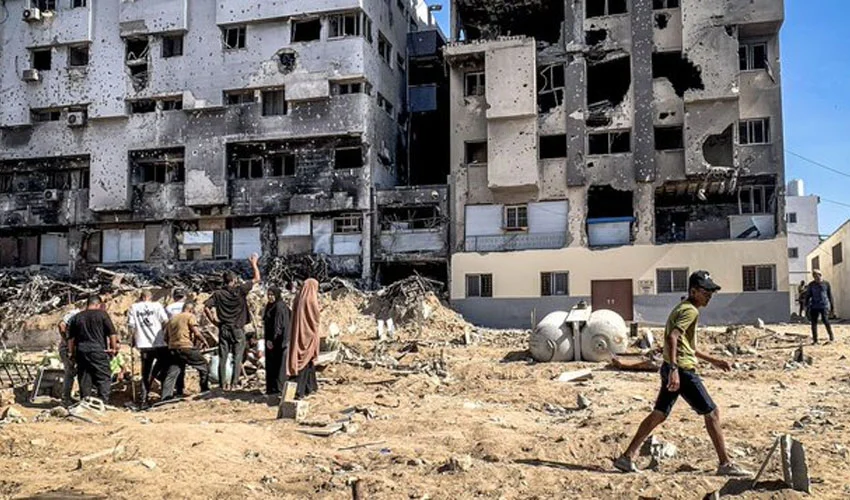GAZA – Israeli airstrikes continued to pound Gaza on Saturday, defying a public call by U.S. President Donald Trump to “stop bombing” the besieged enclave, resulting in the deaths of at least 70 Palestinians throughout the day. The persistent attacks follow Hamas’s recent partial acceptance of Trump’s 20-point peace proposal aimed at ending the nearly year-long conflict.
The Israeli military has maintained that the northern part of Gaza, including the devastated Gaza City, remains an active “combat zone.” In a statement on X, the army urgently instructed residents north of Wadi Gaza to evacuate south via the coastal Rashid Street route, warning that any attempt to return could be “life-threatening.”
Southern Gaza, already severely overcrowded, now struggles to shelter hundreds of thousands of displaced Palestinians who are surviving in makeshift camps and compromised facilities. “We were waiting for this good news. We hope for more to come and to return to Gaza City,” one displaced Palestinian told Al Jazeera from Nuseirat in central Gaza, expressing a desperate yearning for stability.
Gaza City Reduced to Rubble
Gaza City—once the largest urban hub in the enclave—has been reduced to ruins. Daily bombardments have flattened residential towers, schools, and hospitals, forcing hundreds of thousands to flee southward under continuous aerial fire.
The sheer scale of the displacement is staggering. Since mid-August, when Israel launched a renewed assault on the city, the UN Office for the Coordination of Humanitarian Affairs (OCHA) has recorded over 400,000 displacements from north to south, primarily toward Deir el-Balah and Khan Younis. This wave intensified in early September following mass demolitions of high-rise buildings and a mass evacuation order for all of Gaza City on September 9.
Contradictions Between Diplomacy and Ground Reality
The ongoing offensive directly contradicts the cautious optimism that swept the international community following Hamas’s announcement on Friday. Hamas agreed to certain terms of Trump’s ceasefire framework, including the release of all captives, while noting that other vexing issues—such as Israel’s complete withdrawal and Hamas’s disarmament—required further talks.
Trump welcomed the move, calling it “a step toward ending the suffering.” In response, the Israeli military acknowledged the diplomatic progress, stating its chief of staff had ordered to “advance readiness” for the first phase of the plan, reportedly related to the captives’ release. Israeli media hinted at a potential shift toward more defensive operations.
Despite these signals of de-escalation, the air raids continued unabated throughout Saturday morning, killing at least 20 people since dawn, according to Gaza’s hospital officials. The persistence of intense Israeli military action, even in the wake of international calls and a partial agreement, highlights the immense challenges of translating diplomatic breakthroughs into sustained peace on the ground.



